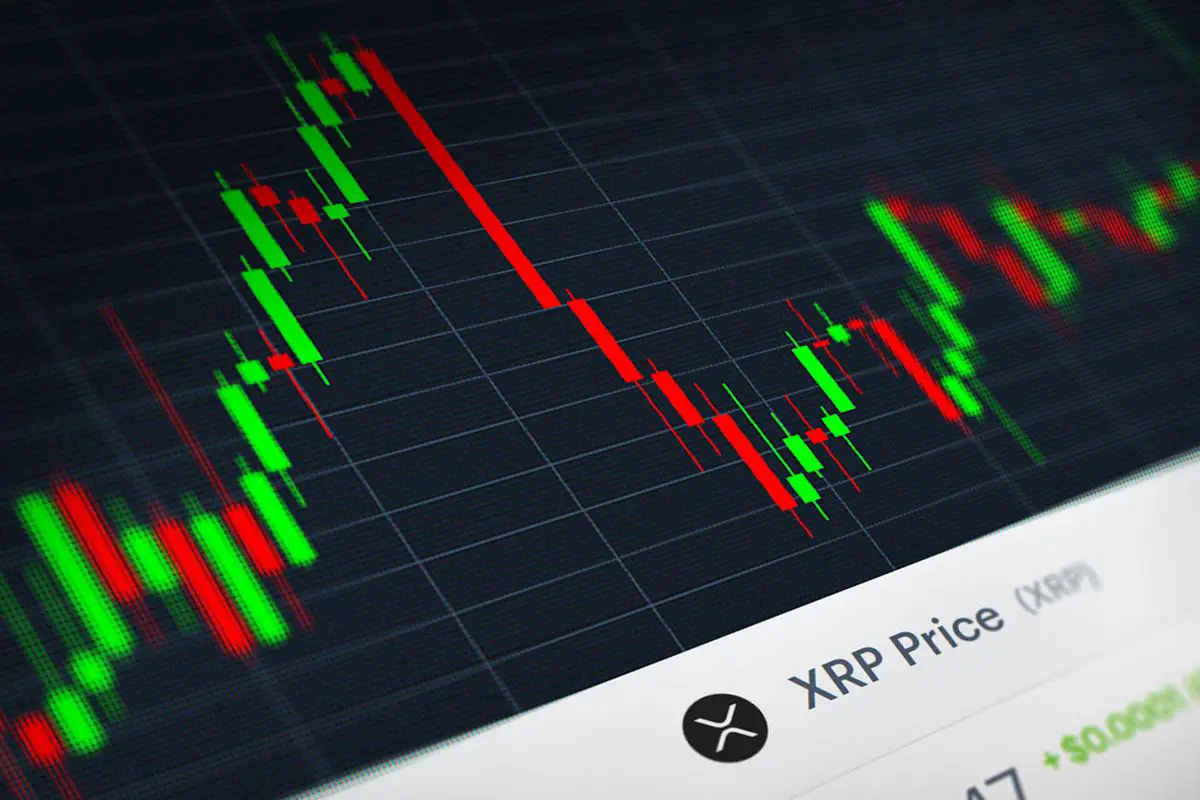In the ever-evolving landscape of cryptocurrency, exchanges face unique challenges in securing insurance for their digital assets. Understanding the costs associated with such insurance is crucial for these platforms to operate securely and with peace of mind. This comprehensive guide delves into the intricacies of insurance for cryptocurrency exchanges, exploring the fundamentals, regulatory considerations, premium calculations, claims processes, and best practices for obtaining and managing insurance coverage.
Key Takeaways
- Cryptocurrency exchanges must navigate a complex set of insurance policies, assess their risks, and compare various insurance plans to find appropriate coverage.
- Compliance with international regulations significantly influences insurance premiums, with stringent requirements potentially leading to higher costs.
- Insurance premiums for crypto assets are calculated based on a range of factors, including asset volatility, security measures, and the exchange’s operational history.
- The claims process in crypto insurance can be challenging due to the digital nature of assets and may involve detailed case studies to understand successful and contested claims.
- Crypto exchanges should establish robust security frameworks, carefully select insurance partners, and engage in continuous monitoring and policy reviews to manage insurance effectively.
The Fundamentals of Insurance for Cryptocurrency Exchanges

Understanding Cryptocurrency Insurance Policies
Cryptocurrency insurance policies are designed to offer exchanges and investors a safety net against the inherent risks associated with digital asset operations. Insurance coverage can vary significantly, with some policies providing comprehensive protection against theft, hacking, and even operational errors, while others may offer more limited coverage.
- Types of Coverage:
- Theft and Hacking
- Operational Errors
- Key Management Losses
- Fraud and Employee Theft
When considering insurance for cryptocurrency exchanges, it’s crucial to understand the terms and exclusions of each policy. A clear grasp of what is and isn’t covered will help in making an informed decision about the level of risk management required for your crypto assets.
It is essential for exchanges to meticulously evaluate their insurance needs against the backdrop of the volatile and unpredictable nature of the cryptocurrency market.
Assessing the Risks and Coverage Needs
When considering insurance for a cryptocurrency exchange, it is crucial to assess the specific risks and determine the appropriate coverage needs. This involves a thorough analysis of potential threats, including cyber attacks, fraud, and regulatory changes that could impact operations.
- Cybersecurity threats: The digital nature of cryptocurrency exchanges makes them prime targets for hackers.
- Operational risks: These include internal fraud, software errors, and business interruptions.
- Regulatory risks: Changes in laws or policies can have significant implications for exchanges.
It’s essential to evaluate the full spectrum of risks to ensure that the insurance coverage is comprehensive enough to protect against all possible scenarios.
Once the risks are identified, exchanges must quantify their exposure to these risks to select the right insurance plan. This may involve calculating the potential loss from various types of incidents and understanding the costs associated with business disruptions or legal challenges.
Comparing Provider Offers and Insurance Plans
When selecting an insurance plan for a cryptocurrency exchange, it’s crucial to compare offers from various providers. Each company may present different terms, coverage limits, and exclusions, which can significantly impact the protection of your digital assets.
- Evaluate the financial stability of the insurance providers.
- Consider the breadth of coverage, including theft, cyberattacks, and operational errors.
- Look for transparency in policy terms and conditions.
- Assess the responsiveness and support during claims.
It’s essential to understand that the lowest premium may not always equate to the best value. Comprehensive coverage that addresses the unique risks of cryptocurrency operations is paramount.
Finally, exchanges should not overlook the importance of customer service and claims support. A provider’s track record in these areas can be as critical as the coverage offered.
Regulatory Landscape and Compliance Costs

Navigating Through Cryptocurrency Regulations
Navigating the complex landscape of cryptocurrency regulations is a critical step for exchanges seeking insurance. Understanding the regulatory frameworks in different jurisdictions is essential, as non-compliance can lead to hefty fines or even the suspension of operations. Exchanges must stay informed about the latest regulatory changes, including those related to taxation and the strategic approaches to adhere to these regulations.
- Stay updated with the latest regulatory news and updates.
- Consult with legal experts to ensure full compliance.
- Implement systems to manage and report on crypto transactions as required by law.
It is imperative for exchanges to proactively adapt to the evolving regulatory environment to mitigate risks and ensure business continuity.
The landscape is ever-changing, with new guidelines and rules emerging as the digital economy grows. Exchanges must not only comply with current regulations but also prepare for future trends that will shape the industry.
Impact of Compliance on Insurance Premiums
The intricate web of regulations governing cryptocurrency exchanges has a direct impact on insurance premiums. Compliance with these regulations is not just a legal necessity but also a significant factor in determining the cost of insurance coverage. Exchanges that demonstrate robust compliance protocols may benefit from lower premiums, as they are perceived to be lower risk by insurers.
The relationship between compliance and insurance costs is a balancing act. Exchanges must invest in compliance to not only operate legally but also to manage insurance expenses effectively.
Insurance providers assess the level of compliance with various standards, including anti-money laundering (AML) and know your customer (KYC) regulations. The following list outlines key compliance areas that influence insurance premiums:
- Adherence to international AML guidelines
- Implementation of effective KYC procedures
- Compliance with local and international financial regulations
- Regular audits and reporting
Exchanges that fail to meet these compliance standards may face higher insurance costs due to the increased risk of legal issues and potential for financial losses.
International Regulatory Considerations for Exchanges
Cryptocurrency exchanges operating across borders must navigate a complex web of international regulations. Each jurisdiction has its own set of rules and compliance requirements, which can significantly impact the cost and feasibility of obtaining insurance. For instance, the Travel Rule introduced by the Financial Action Task Force (FATF) mandates that financial institutions involved in virtual asset (VA) transfers collect and share personal data of senders and recipients.
The adherence to international regulations such as the Travel Rule is not just about compliance; it’s about fostering a secure and accountable environment for cryptocurrency transactions.
As of April 2023, 35 out of 135 jurisdictions have implemented Travel Rule legislation, including major financial centers like the U.S., Germany, Singapore, Hong Kong, and the UK. With the European Union set to follow suit, cryptocurrency exchanges must prepare for these changes to maintain compliance and manage insurance costs effectively.
Calculating Insurance Premiums for Crypto Assets

Factors Influencing Insurance Costs
When it comes to insuring cryptocurrency exchanges, several factors play a critical role in determining the cost of premiums. The type of digital asset being insured is a primary consideration, as different cryptocurrencies carry varying levels of risk. For example, well-established coins like Bitcoin may be deemed less risky compared to newer, more volatile altcoins.
Another significant factor is the security infrastructure of the exchange. Robust security protocols can lead to lower premiums, as they reduce the likelihood of theft and hacking incidents. Conversely, exchanges with weaker security measures may face higher insurance costs due to increased risk.
Historical volatility of the asset also impacts insurance premiums. Assets with a history of stable prices may attract lower premiums, while those with erratic price movements could be more expensive to insure. This is because insurers assess the potential for claims based on past market behaviors.
- Type of digital asset
- Security protocols in place
- Historical asset volatility
Insurance costs for cryptocurrency exchanges are not only influenced by the inherent risks associated with digital assets but also by the effectiveness of the exchange’s risk management strategies.
Methods for Valuing Cryptocurrency Holdings
Valuing cryptocurrency holdings is a complex process that requires a clear understanding of the market and the specific assets in question. The cost basis method is commonly used, where the value is determined based on the original purchase price plus any associated fees. This method is particularly relevant for tax purposes, as it helps in calculating capital gains or losses when a cryptocurrency is sold or exchanged.
Another approach considers the fair market value of the cryptocurrency at the time of a transaction. This is crucial when cashing out cryptocurrency, as it determines the taxable amount if there’s a gain or the reportable amount in case of a loss. Exchanges must also consider the implications of exchanging one cryptocurrency for another, as this can trigger a taxable event.
It’s essential for cryptocurrency exchanges to maintain accurate records of all transactions to ensure proper valuation and compliance with tax regulations.
Valuation can also be influenced by the intrinsic properties of the cryptocurrency, such as the size and costs of the network it operates on. This perspective views cryptocurrencies not as mere assets but as networks with value arising from their utility and user base.
Strategies for Reducing Insurance Expenses
Cryptocurrency exchanges can employ various strategies to reduce their insurance expenses. Optimizing fee structures is a critical step, as highlighted by a guide on crypto exchange fees which underscores the importance of minimizing costs for profitable trading. By understanding and streamlining fee mechanisms, exchanges can enhance their revenue sources and growth prospects, ultimately leading to lower insurance costs.
- Review and adjust coverage: Regularly assess the insurance coverage to ensure it aligns with current risks and doesn’t include unnecessary add-ons.
- Increase security measures: Implementing advanced security protocols can lower the risk profile and thus reduce premiums.
- Negotiate with providers: Engage in discussions with insurance providers to seek better rates based on the exchange’s risk management practices.
- Consider self-insurance: For some risks, it may be more cost-effective to self-insure, setting aside funds to cover potential losses.
By diligently applying these strategies, exchanges can achieve a more favorable balance between comprehensive coverage and manageable insurance costs.
Claims and Compensation in Crypto Insurance

The Claims Process Explained
When a cryptocurrency exchange faces a loss due to theft, hacking, or other covered events, the claims process is a critical path to restitution. The first step is to promptly notify the insurance provider of the incident, providing all necessary details and documentation. This is followed by an investigation by the insurer to verify the claim.
- Notify the insurance provider immediately.
- Provide detailed incident report and supporting evidence.
- Await the insurer’s investigation and verification.
The insurer may require additional information or clarification during their assessment. Once the claim is verified, the exchange and the insurer will discuss the compensation terms. It’s important to understand that the compensation might not always cover the full extent of the loss, especially if the policy has certain exclusions or limits.
The efficiency and fairness of the claims process can significantly impact the exchange’s ability to recover from a loss and continue operations.
Challenges in Claim Settlements for Crypto Exchanges
Claim settlements in the realm of cryptocurrency exchanges are fraught with unique challenges. The volatility of crypto assets can significantly complicate the valuation process at the time of a claim. Moreover, the lack of standardized protocols for reporting and assessing claims adds to the complexity.
- Fraudulent activities, such as the notorious ‘Pig Butchering Scam’, often lead to disputes over the legitimacy of claims.
- The anonymity inherent in crypto transactions can hinder the verification of claimants and the tracing of assets.
- Regulatory uncertainty makes it difficult to establish a consistent framework for claim settlements across different jurisdictions.
The intricacies of claim settlements necessitate a meticulous approach to ensure fairness and accuracy in compensating losses.
Crypto exchanges must navigate these challenges with diligence and adapt to the evolving landscape of digital asset insurance. Establishing clear guidelines and engaging with reputable insurance providers can mitigate some of these issues, but the path to streamlined claim settlements remains arduous.
Case Studies: Successful and Contested Claims
The landscape of cryptocurrency insurance claims is as volatile as the market itself. Successful claims often hinge on the clarity of policy terms and the ability to provide indisputable evidence of loss. On the other hand, contested claims may arise from ambiguities in policy coverage or disputes over the valuation of lost assets.
In the realm of crypto insurance, the distinction between a successful and a contested claim can be razor-thin, often determined by the exchange’s adherence to security protocols and the thoroughness of their record-keeping.
Case studies in the industry reveal a pattern: exchanges with robust security measures and transparent operations tend to navigate the claims process more effectively. Below is a list of factors commonly influencing claim outcomes:
- Clear definition of covered risks
- Timely notification of the insurer
- Comprehensive documentation of assets and transactions
- Legal precedents and regulatory actions
For instance, the SEC’s enforcement actions, such as the CryptoFX scheme halt in September 2022, set important precedents that impact the insurance claims process for crypto exchanges.
Best Practices for Crypto Exchanges Seeking Insurance

Building a Robust Security Framework
For cryptocurrency exchanges, establishing a robust security framework is paramount to gaining trust and ensuring the safety of client assets. This involves a multi-layered approach that includes both physical and digital measures.
- Physical security measures may encompass biometric access controls, surveillance systems, and secure locations for servers.
- Digital security involves the implementation of firewalls, intrusion detection systems, and regular security audits.
- Operational security includes employee background checks, access level controls, and ongoing security training.
A disciplined, rules-based framework is essential for maintaining security standards and adapting to new threats. By continuously refining strategies and incorporating lessons learned, exchanges can stay ahead of potential vulnerabilities.
In the context of crypto due diligence, the fiduciary responsibility extends to ensuring that all security measures are up to date and capable of protecting against current threats. This diligence is not just a technical requirement but a fundamental aspect of financial stewardship.
Selecting the Right Insurance Partner
Selecting the right insurance partner is a pivotal decision for cryptocurrency exchanges. The ideal partner should not only offer comprehensive coverage but also understand the unique challenges of the crypto market. Exchanges must evaluate insurers based on their reputation, financial stability, and experience in the crypto space.
When considering potential insurance partners, exchanges should look for those with a proven track record of handling claims efficiently and fairly. It’s also important to assess the level of customer support provided, as this can be crucial in the event of a security breach or other incidents requiring immediate attention.
The process of selecting an insurance partner should be thorough, with a focus on long-term collaboration and mutual understanding of the risks involved in the crypto industry.
Finally, exchanges should consider the following factors before making a decision:
- The insurer’s understanding of digital asset risks
- The comprehensiveness of the policy coverage
- The responsiveness to claims and customer service quality
- The flexibility of the policy to adapt to the exchange’s growth
- The cost-effectiveness of the insurance premium
Continuous Monitoring and Policy Review
In the dynamic landscape of cryptocurrency insurance, continuous monitoring and policy review are essential for exchanges to maintain adequate coverage and manage risks effectively. Exchanges must regularly assess their insurance needs against the backdrop of evolving threats and market conditions. This proactive approach ensures that coverage remains relevant and comprehensive.
- Regularly update risk assessments to reflect changes in the exchange’s operational environment.
- Review policy terms periodically to identify any gaps in coverage that may have emerged over time.
- Stay informed about new insurance products and services that could enhance protection.
- Engage with insurance providers to discuss potential adjustments to policies based on the latest risk landscape.
By staying vigilant and responsive to the changing nature of risks, crypto exchanges can safeguard their assets and reputation more effectively. It is not just about having insurance in place but ensuring that it evolves in tandem with the exchange’s growth and the broader industry trends.
Conclusion
Navigating the complexities of insurance for cryptocurrency exchanges is crucial for investors seeking to safeguard their digital assets. Throughout this guide, we’ve explored the various costs and considerations associated with securing insurance, from understanding the tax implications of crypto transactions to evaluating the fees charged by trading platforms. It’s evident that maintaining regulatory compliance, seeking adequate insurance coverage, and staying informed about the evolving landscape of crypto taxation are key to minimizing risks and maximizing the benefits of crypto investments. As the industry continues to mature, investors must remain vigilant and proactive in adapting their strategies to ensure their investments are protected against potential losses due to theft, fraud, or regulatory changes.
Frequently Asked Questions
What is cryptocurrency insurance and why is it important for exchanges?
Cryptocurrency insurance offers protection to investors and exchanges against the loss of digital assets due to theft, hacking, or other security breaches. It is crucial for exchanges to mitigate financial risks and maintain trust with their users.
How do compliance costs affect insurance premiums for cryptocurrency exchanges?
Compliance with regulatory requirements such as AML and KYC can increase operational costs for exchanges. These costs may be reflected in higher insurance premiums as they contribute to the overall risk profile that insurers must cover.
What factors influence the cost of insurance premiums for crypto assets?
The cost of insurance premiums for crypto assets is influenced by factors such as the level of security measures in place, the exchange’s claim history, the regulatory environment, and the volatility and liquidity of the assets being insured.
What challenges do crypto exchanges face during the claims process for insurance?
Crypto exchanges may face challenges such as proving the legitimacy of a claim, dealing with the ambiguity of policy terms regarding digital assets, and the complexity of assessing the value of lost or stolen cryptocurrency.
What are some best practices for crypto exchanges seeking to obtain insurance?
Best practices include implementing robust security measures, carefully selecting an insurance partner with expertise in the crypto market, and regularly reviewing and updating the insurance policy to reflect changes in asset value and risk factors.
Can cryptocurrency losses reduce my tax burden?
Yes, reporting capital losses from cryptocurrency transactions can potentially reduce your overall tax burden. It’s important to keep detailed records of all transactions to accurately report gains and losses.





